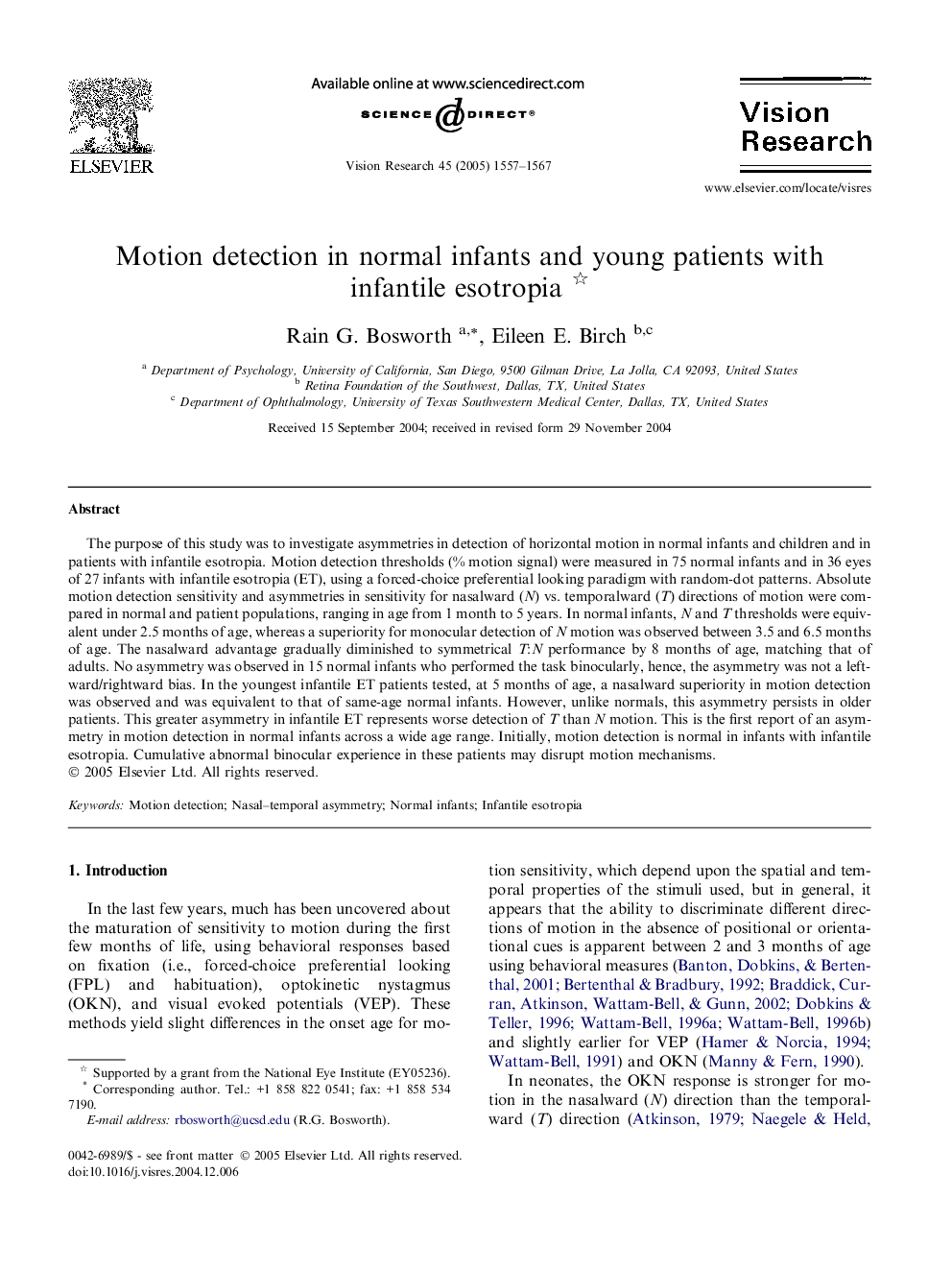| Article ID | Journal | Published Year | Pages | File Type |
|---|---|---|---|---|
| 9348536 | Vision Research | 2005 | 11 Pages |
Abstract
The purpose of this study was to investigate asymmetries in detection of horizontal motion in normal infants and children and in patients with infantile esotropia. Motion detection thresholds (% motion signal) were measured in 75 normal infants and in 36 eyes of 27 infants with infantile esotropia (ET), using a forced-choice preferential looking paradigm with random-dot patterns. Absolute motion detection sensitivity and asymmetries in sensitivity for nasalward (N) vs. temporalward (T) directions of motion were compared in normal and patient populations, ranging in age from 1 month to 5 years. In normal infants, N and T thresholds were equivalent under 2.5 months of age, whereas a superiority for monocular detection of N motion was observed between 3.5 and 6.5 months of age. The nasalward advantage gradually diminished to symmetrical T:N performance by 8 months of age, matching that of adults. No asymmetry was observed in 15 normal infants who performed the task binocularly, hence, the asymmetry was not a leftward/rightward bias. In the youngest infantile ET patients tested, at 5 months of age, a nasalward superiority in motion detection was observed and was equivalent to that of same-age normal infants. However, unlike normals, this asymmetry persists in older patients. This greater asymmetry in infantile ET represents worse detection of T than N motion. This is the first report of an asymmetry in motion detection in normal infants across a wide age range. Initially, motion detection is normal in infants with infantile esotropia. Cumulative abnormal binocular experience in these patients may disrupt motion mechanisms.
Keywords
Related Topics
Life Sciences
Neuroscience
Sensory Systems
Authors
Rain G. Bosworth, Eileen E. Birch,
